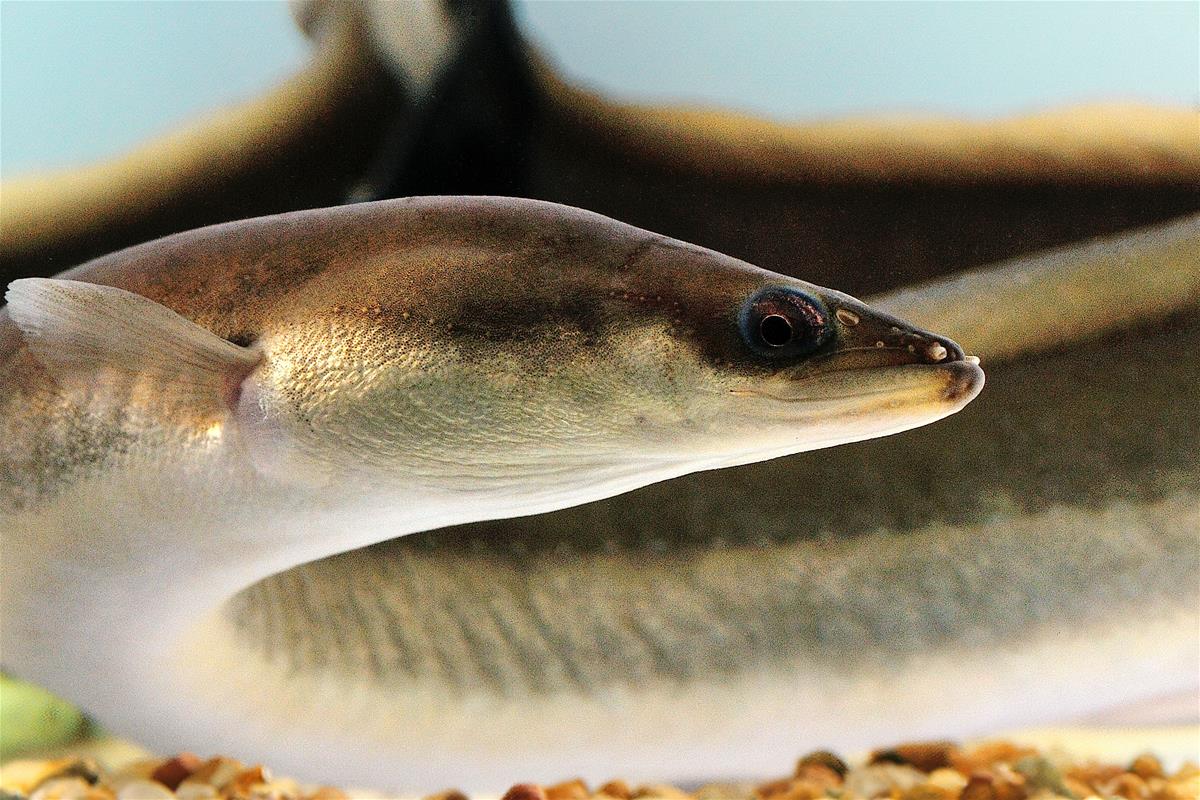Viewable


Fish
Actinopterygii
Actinopterygii
Location at the Zoo
Americas
Global Range
North America
American eel
Anguilla rostrata
Order: Anguilliformes
Family: Anguillidae
Genus: Anguilla
Conservation Status: IUCN

Distribution
Found along the Atlantic coast of North and Central America and throughout inland waters connected to the Atlantic Ocean. In Canada, populations exist in Ontario, Quebec, and the Maritime provinces.Habitat
Lives in freshwater, brackish, and coastal marine environments during most of its life but migrates to the Sargasso Sea (in the western Atlantic Ocean) to spawn—a journey of thousands of kilometres.Diet
Carnivorous, feeding on aquatic insects, crustaceans, worms, fish, and other small aquatic organisms. Eels are mostly nocturnal hunters.Reproduction
American eels are catadromous—they live in freshwater or brackish environments but migrate to the ocean to spawn. All individuals make a one-time migration to the Sargasso Sea to breed and then die. Eggs hatch into tiny, leaf-shaped larvae called leptocephali, which drift on ocean currents toward North America before transforming into juveniles (elvers) and migrating into rivers.Adaptation
Slim, elongated body allows navigation through tight spaces and muddy substrates.
Mucous-covered skin helps with protection and moisture retention.
Ability to absorb oxygen through skin allows survival in low-oxygen conditions.
Remarkable migratory instinct guides them thousands of kilometres to a single spawning location.
Threats to Survival
Habitat fragmentation from dams and barriers.
Turbine mortality during downstream migration.
Water pollution and habitat degradation.
Overfishing of juvenile eels (elvers) and adults.
Climate change affecting ocean currents and spawning success.











